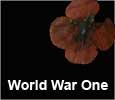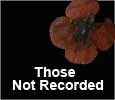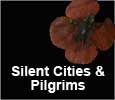The Mountain Project
Responsibility for the naming of lakes, mountains and streams in Canada rests with the Canadian Permanent Committee on Geographical Names. Their decision, in 1947, to name geographical features after Canadian naval, army and airforce fatal casualties includes naming features close to the individual's place of enlistment. As a result, in the Chilliwack District, some mountains are named after residents of Aggasiz and Hope as well as Chilliwack. [image: Darcy Grainger at the top of Grainger Peak, 2006].
Lists of fatal casualties were provided to various provincial representatives of the department by the Department of Veterans Affairs. By 1965, it had become difficult for the department to inform next of kin that a feature had been named after a lost relative. However, the department continued to draw names from the casualty list, as had been the practice, and applied them to recently published provincial maps. Relatives have brought names forward on occasion and their requests have been quickly assigned to unnamed features.
However, it is the naming of one geographical feature that would inspire one man, Neil Grainger, to take up the challenge of honouring these individuals by climbing or hiking, or organizing treks to the features that were named after the casualties. In 1965, the Graingers were informed that a mountain peak had been named after Frank Grainger, a member of the Royal Canadian Air Force who had been killed in 1943. This airman was Neil Grainger's brother and from that time, Neil began to think of climbing the peak. It was not until the 1970s that he was able to attempt the climb, an objective that was brought to a successful conclusion, after three attempts. Once this climb had been achieved Neil began to consider honouring all of the individuals for which features had been named and so the Mountain Project was conceived.
In 1984, the first visit to a feature, as part of the Mountain Project, was achieved when Mt. MacFarlane was climbed. The Chilliwack Progress newspaper became involved when they agreed to publish accounts of the visits on a biweekly basis that was delivered over the next 2 and a half years. The trips were well documented with notes written on whatever material was available, photographs were taken of the commemorative crosses that Neil had constructed and that the teams placed at the respective sites. In particular, the summit crosses were carefully considered so as not to become litter, and after first placing a wreath on their initial project climb, they switched to styro-foam crosses. However these were not biodegradable and could in effect become litter. Consideration was given to the fact that at these heights, the markers were subject to ice, snow and high winds. Instead Neil constructed cedar crosses that he engraved with the individual's name, year of birth and death. Holes were drilled to allow nailing or wiring to a tree without spitting the cross. The crosses put into cairns have survived very well despite incredible conditions. Bot the crosses on Grainger and Laughington have survived as of summer 2006.
In 1998, Neil Grainger self-published "The Mountain Project", a 98 page illustrated history of the journeys that were made to creeks, lakes and mountains as part of the project.




Chilliwack Museum and Archives 45820 Spadina Avenue, Chilliwack, BC, Canada V20 1T3 [604.795.5210]


